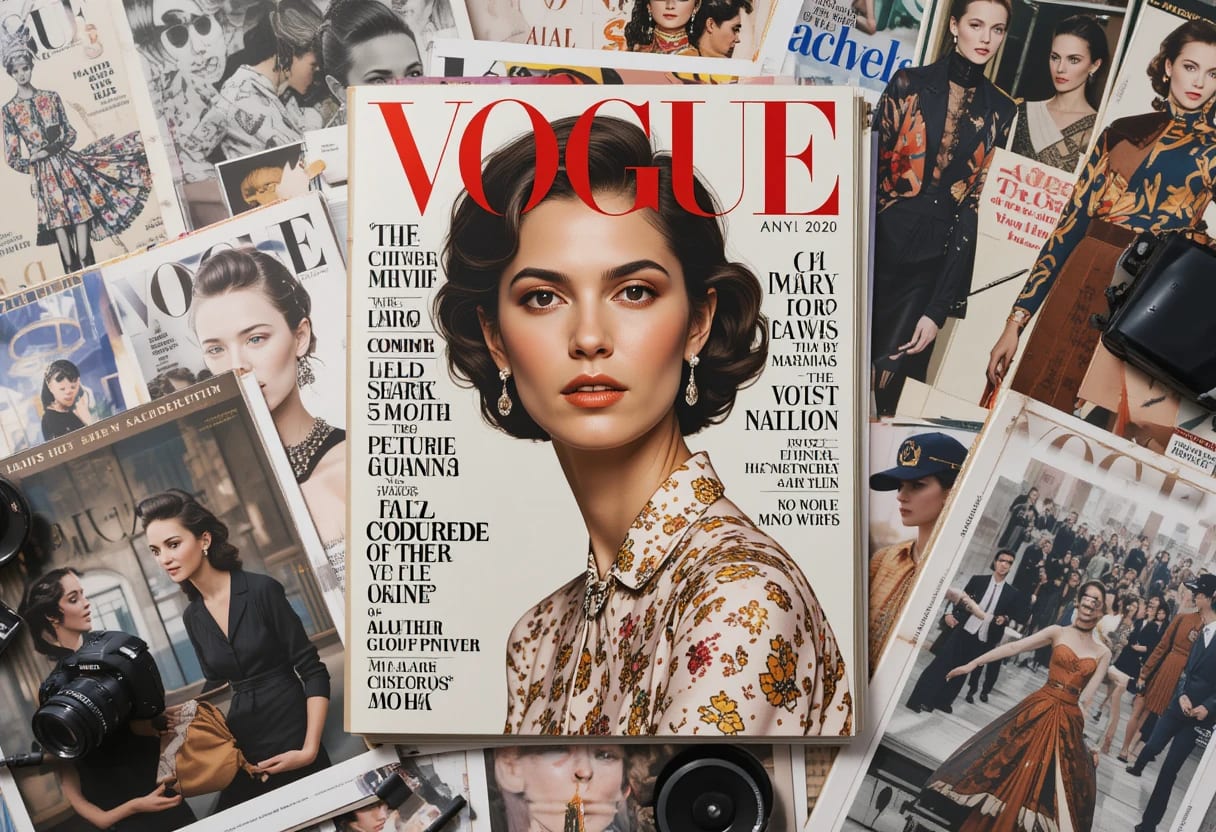The Inked Empire: How Vogue Became Fashion’s Bible
From glossy covers to cultural authority — the story of a magazine that shaped beauty standards.
In the world of fashion, few institutions hold as much sway as Vogue. Its name is synonymous with style, elegance, and authority — a single glossy cover can launch a designer, immortalize a model, or define a season. Yet Vogue’s rise to dominance was not preordained. It is a story of vision, risk-taking, and relentless reinvention.
From its founding in the late 19th century to the digital age, Vogue has not merely chronicled fashion — it has shaped it, dictating beauty standards, trends, and cultural norms for generations.
The Birth of Vogue
Vogue was first published in 1892 by Arthur Baldwin Turnure in the United States. Initially, it was a weekly newspaper for New York’s social elite, covering fashion, society, and etiquette. Its pages featured the latest in haute couture from Paris, along with gossip from the world’s upper crust.
What set Vogue apart was its aspiration. It was not simply a magazine; it was a window into a world most readers could only dream of entering. The promise of sophistication and glamour was embedded in every page, from illustrated sketches of gowns to articles on high society life.
The Condé Nast Revolution
In 1909, Condé Montrose Nast purchased Vogue and transformed it into the powerhouse we recognize today. Nast had a visionary understanding of branding, advertising, and global expansion. He made Vogue a glossy, aspirational magazine, merging fashion coverage with photography that made readers yearn for elegance.
He expanded Vogue internationally, launching editions in Britain, France, and beyond, creating the blueprint for global influence. By curating content that combined beauty, lifestyle, and celebrity culture, Nast elevated Vogue from a niche publication into a cultural authority.
Photography and the Visual Language of Fashion
Perhaps no single factor cemented Vogue’s dominance as “fashion’s bible” more than its embrace of photography. In the 1920s and 30s, photographers such as Edward Steichen, Horst P. Horst, and later Irving Penn and Richard Avedon turned the magazine into a visual masterpiece.
Fashion was no longer merely described — it was sculpted in light, shadow, and pose. A gown could appear ethereal, a model could embody modern femininity, and a photograph could influence millions. Vogue’s pages became a language of desire, teaching readers not just what to wear, but how to perceive beauty.
Shaping Cultural Standards
Vogue has always been more than a fashion magazine. It has been a mirror and a molder of societal ideals. Under the guidance of legendary editors like Diana Vreeland and later Anna Wintour, Vogue dictated what was chic, glamorous, and aspirational.
Vreeland, editor from the 1960s to the early 1970s, was revolutionary in her approach. She celebrated eccentricity, art, and personality, infusing fashion with fantasy and storytelling. Meanwhile, Wintour, Vogue’s editor-in-chief since 1988, brought discipline, authority, and a keen sense of market influence, blending celebrity culture with runway fashion to make Vogue a global tastemaker.
Through its covers and spreads, Vogue has shaped public perception — from idealized body types to the prominence of designers and brands. Its influence extends beyond clothes, touching beauty standards, lifestyle aspirations, and even politics.
Cultural Authority and Controversy
Vogue’s authority has not come without critique. Its pages have been criticized for promoting unattainable beauty standards and exclusivity, sparking debates about representation, diversity, and inclusivity. Yet, Vogue has responded over time, expanding its vision to include broader perspectives, global voices, and more inclusive imagery.
The magazine’s cultural role is undeniable. A Vogue feature can make or break a career. To appear on its cover is to achieve recognition, while its editorials can launch trends before they hit the mainstream. Vogue has become a status marker, a compass for taste, and a document of cultural history.
Digital Evolution
The rise of the internet and social media challenged traditional print publications, but Vogue adapted. Digital editions, websites, and social platforms expanded its reach, allowing younger audiences to engage with fashion instantly. Instagram, TikTok, and YouTube have amplified Vogue’s influence, blending tradition with innovation.
Despite these changes, Vogue’s essence remains: it is an arbiter of style, culture, and desire, guiding readers through an ever-changing fashion landscape while maintaining authority and elegance.
Legacy and Influence
Vogue has outlasted competitors, economic recessions, and the changing tides of popular culture. Its covers have chronicled decades of social evolution — flappers, power suits, supermodels, celebrity icons, and global movements. It has consistently combined heritage and innovation, balancing timeless elegance with cutting-edge trends.
The magazine’s pages are a record of aspiration, a canvas where designers, photographers, and editors create stories that captivate and inspire. Vogue’s influence reaches beyond fashion: it is a cultural institution, defining what society considers beautiful, stylish, and desirable.
The Empire of Ink and Influence
From its humble beginnings in 1892 to its current status as a global media empire, Vogue is more than paper and ink. It is a symbol of aspiration, authority, and artistry. Every cover, every editorial, every photograph tells a story — of ambition, creativity, and power.
To hold a copy of Vogue is to hold a piece of cultural history. To appear in its pages is to claim a moment in fashion immortality. Vogue did not just report on beauty; it created it, shaped it, and gave it a global stage.
The magazine endures because desire endures — and Vogue has mastered the art of making the world want more.


